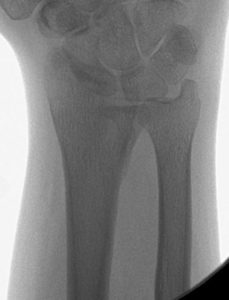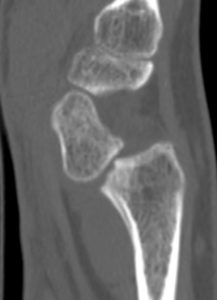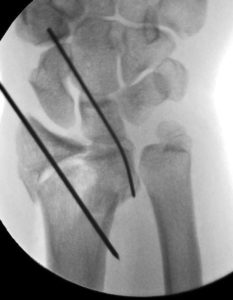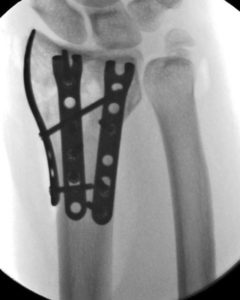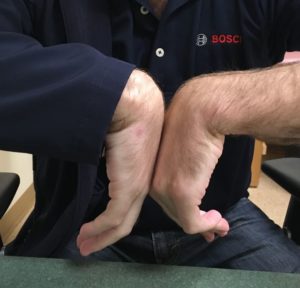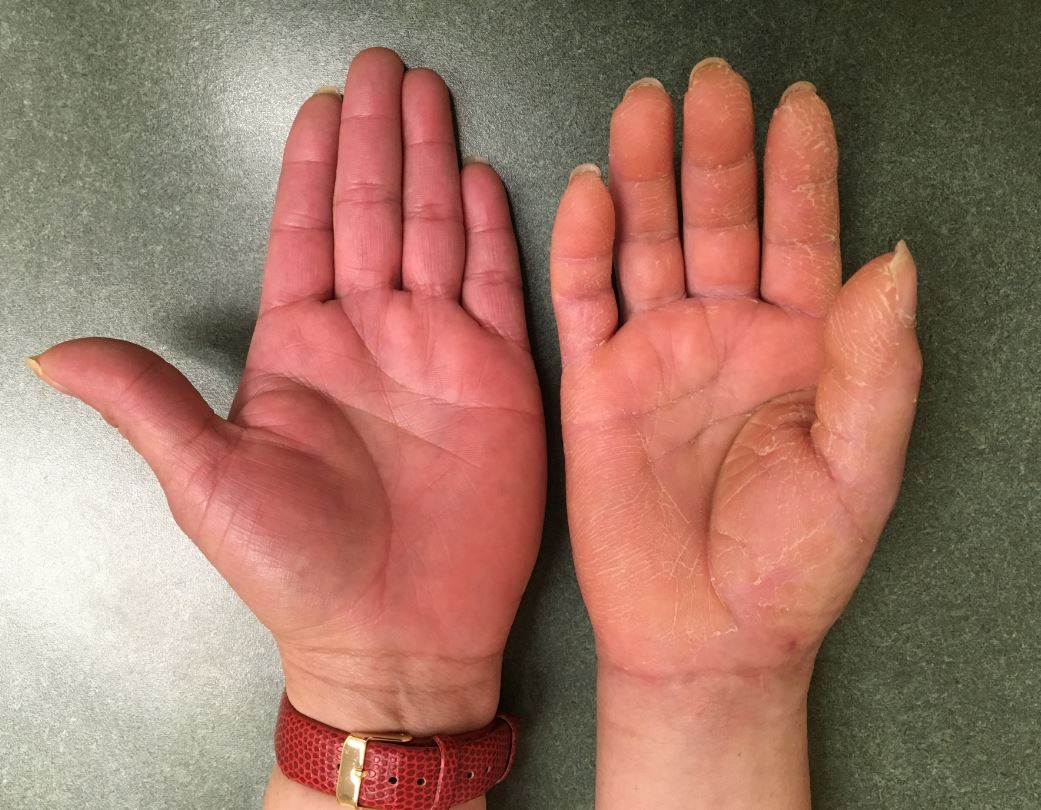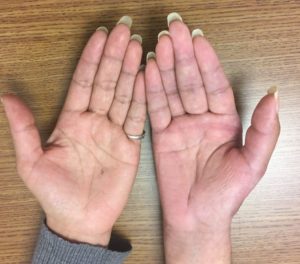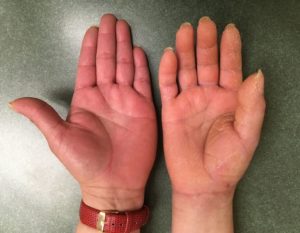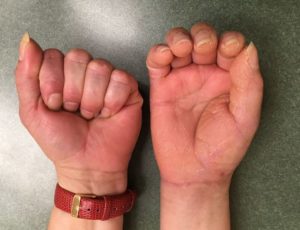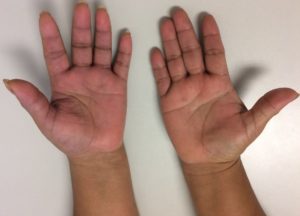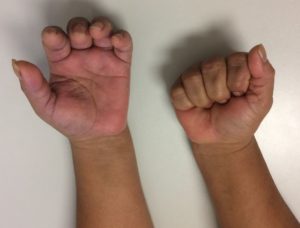Case Presentation: A 36 year old gentleman sustained a wrist injury while running and falling but xrays at the time were reportedly negative for a fracture. He was given a splint but had continued and persistent pain and swelling. He came to my office 6 months later and xrays and a CT scan showed a dislocated wrist with a malunited lunate facet fragment. Based on his young age and long term function, I recommended an osteotomy to correct the bone and restore the articular surface. The fracture healed uneventfully and he worked aggressively with therapy to regain motion which plateaued at 1 year with wrist flex/ext of 25/55 degrees and supination/pronation of 50/80 degrees.
Distal Radius 3 plates
Case Presentation: 30 year old gentleman injured his distal radius (wrist fracture) while snowboarding. He had a severe fracture with separation of the lunate and scaphoid facet fragments. Intra-operative fixation required individual fragment specific plating with screws, wires, and plates. The fracture healed in a reasonable position, and the plates were taken out once healed due to some mild irritation. Once recovered he had nearly full motion and was very pleased.
CRPS Images
The following images represent classic signs and symptoms of Complex Regional Pain Syndrome, also known as CRPS. Historically, this has also been referred to as sympathetic reflex dystrophy or causalgia.
I have found that the most sensitive and predictive finding is a dramatic loss in function (strength or motion) of a body part that is out of proportion to the injury. Other common findings include:
- changes in skin texture on the affected area; it may appear shiny and thin
- abnormal sweating pattern in the affected area or surrounding areas
- changes in nail and hair growth patterns
- stiffness in affected joints
- problems coordinating muscle movement, with decreased ability to move the affected body part
- abnormal movement in the affected limb, most often fixed abnormal posture (called dystonia) but also tremors in or jerking of the limb.
Treatment always requires a prompt diagnosis and typically starts with therapy to improve motion and reduce discomfort. However, some evidence suggests CRPS is propagated by a compressed nerve (ie: median nerve) and surgical intervention is sometimes recommend, such as a carpal tunnel release.
The following images show patients with an open palm, and attempted closed fist, compared to the normal side.


